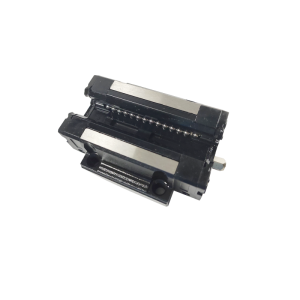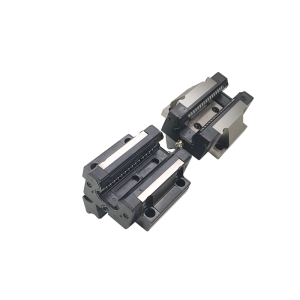In industrial automation, linear guides play an important role in ensuring smooth and accurate linear motion. These vital components are used in a wide variety of industries, from manufacturing to robotics and aerospace. Knowing the common classifications of industrial linear guides is essential for engineers, designers and any user involved in industrial machinery. However, I believe that some people still have doubts about linear guides and do not understand the classification of guides, so today PYG will give you a detailed explanation.
1. Ball bearing linear guide:
Ball bearing linear guides are the most commonly used type due to their high load capacity and smooth motion. They consist of two main components: tracks and carriages. The carriage utilizes recirculating ball bearings that roll along rails to ensure friction-free movement. These guideways are ideal for applications requiring high precision and long travel, such as CNC machine tools, laser cutting systems, and semiconductor manufacturing.

2. Roller linear guide:
Designed for heavier loads and harsh environments,roller linear guides use cylindrical rollers instead of balls. This configuration enhances load capacity and provides better resistance to contaminants such as dust and debris. Roller guide rails are commonly used in industrial machinery such as heavy-duty conveyors, material handling equipment and outdoor applications.

3. Guide the linear guide only:
Guide-only linear guides, also known as profile guides, employ a pair of guide rails to guide the movement of the carriage. This design provides high stiffness and rigidity, making it suitable for applications requiring high accuracy, repeatability, and resistance to torsional forces. Guide-only linear guides are commonly used in machine tools, industrial robots, and other high-precision motion systems.
4. Non-guided linear guide rail:
Guideless linear guides rely on a single rail that can accommodate radial and lateral loads. Its simple yet durable design makes it compatible with a variety of industrial applications, including packaging machines, printing systems and medical equipment. Thanks to its flexibility, the guideless linear guide can be easily adapted to different installation orientations.
Industrial linear guides are the basis for many modern technological advances to achieve smooth, accurate linear motion in a variety of industries. By knowing the common classifications of these guidelines, professionals can choose the appropriate type for their specific application needs. Whether it is for high-precision ball bearing guides or for heavy-duty roller guides, each classification has its own unique advantages. Ensuring successful industrial automation starts with choosing the right linear guide that can significantly affect the overall performance, efficiency and life of the machinery. If you do not understand this explanation, please contact our customer service, customer service will make a detailed explanation for you.
Post time: Aug-11-2023






